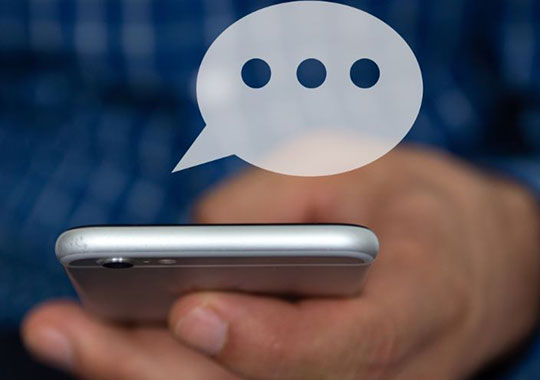
90% of the Earth’s surface is not covered by communications. But satellite to mobile could fill it all in…
Constellations spoke to Charles Miller, co-founder and CEO of Lynk, a company developing a constellation that aims to turn satellites into cell towers that will extend ubiquitous mobile coverage to the world’s population.
Five of the world’s eight billion people have mobile devices, yet just 10% of the planet is covered from a square mile perspective, offering a lot of room for growth.
“We've solved not only a big technical problem, but an economic problem as well,” said Miller. “Building cell towers everywhere and stringing fiber is just impossibly cost prohibitive. You can't cover the planet that way. We've solved the problem to cover those areas much more economically with satellite.”
While cellular backhaul has existed for years, it still depends on ground-based towers and infrastructure. Lynk’s vision is for satellites to function as cell towers in space to keep users connected everywhere on the planet no matter what.
“So your phone actually thinks our satellites are cell towers and they work in all respect, like cell towers.”

A Mobile Operator's Best Friend
But rather than competing with mobile carriers or substituting for the ground-based towers, Miller said they will do the opposite. By adding a “space layer,” Lynk will supplement them. ”We are going to be their best friend. We're filling in all the black spots.”
When a user’s phone is unable to find or connect to a ground tower, Miller said, the mobile network operator in that case will have the phone “talk to the space-based cell tower."
“Your phone will not be able to tell the difference, and you won't even know that it's connected to a satellite. For you, it just stays connected everywhere. That's our vision.”
Beachfront property
While other companies are pursing similar business models, those approaches, Miller said, require new frequencies that are not in current phones, which could take years to change, if at all.
“We're doing something with spectrum that's already in the phone, and our satellites work with basically every phone on the planet today.”
He likened Lynk’s approach to operating on what he called, the “beachfront property for mobile phones and UHF.”
Differentiating it from other satellite constellations, “That's a much better link characteristic. It goes through foliage and trees, and it communicates and closes the link over long distances better.”
Miller said Lynk’s proven technology was granted the first ever license by the FCC for commercial satellite direct to standard mobile phone service and is currently being tested in 12 countries and on five continents.
Even with the extensive coverage of today’s wireless networks, he noted that there are still plenty of places in the US without connectivity, citing his home just an hour outside of metro DC as an example. Not to mention, he added, the towers and infrastructure being taken out by fires, hurricanes, tornadoes, and other recurring disasters. In those cases, Miller said, there will be “instant backup from space and you'll never be disconnected.”
Solving the Hard Problem: Closing the Link
Although mobile phones do receive signals from satellites, such as GPS for location, it is limited to one-way. Two-way communication with satellites, Miller explained, is a much harder technical problem, one that they have solved.
“Your phone has to both get data down and send data up. That's the hard part that many didn't think was possible. We figured that out back in 2015, that you could close the link from a standard mobile phone.”
Along with modern communication protocols, Miller also credits Moore's Law for solving the two-way connection, which has advanced both satellites and phones with supercomputer-like processing power.
Ramping Up
The next challenge Miller said is to build out its constellation of satellites, which use software defined networks and software defined radios.
Lynk has launched six satellites, the first five experimental. The sixth, now operational in orbit, has solved all the key problems “to bring the commercial service to the world,” Miller said.
“We have three more satellites that are built and ready to launch that we will scale up and accelerate next year.”

In the near term, given its limited capacity, Lynk will offer text message service only, until capacity expands to support more intensive voice and data traffic.
“We've decided the right thing to do is only allow messaging at the beginning so we can get everybody some connectivity first.”
To put that into context, Miller explained that a single five-minute voice call, which equates to about 5,000 SMS text messages, would “knock the other 4,999 people off the satellite,” making a connection unavailable to the rest.
Eventually it plans to ramp up to 5,000 satellites, because as Miller sees it, with billions of people on mobiles around the world, demand is great.
But he made clear it will take a few years to build and launch those satellites to where users are continuously connected wherever they are.
As the world's “first commercial cell towers in space today,” Miller wants to make sure everybody has some connectivity first.
“We'd like to snap our fingers so that everybody has real time continuous connection everywhere,” but in the meantime, he believes people will appreciate having an “alternative to nothing,” even if it means waiting 15 minutes for the satellite to pass overhead to be connected.
We need to build a lot more capacity to serve everybody on the planet. That's a great problem to have. It's a huge market, huge need for the world.”
To hear more about satellite direct to mobile technology, and how it differs economically and technically from ground-based cellular and other LEO constellations, click here for the full interview.
